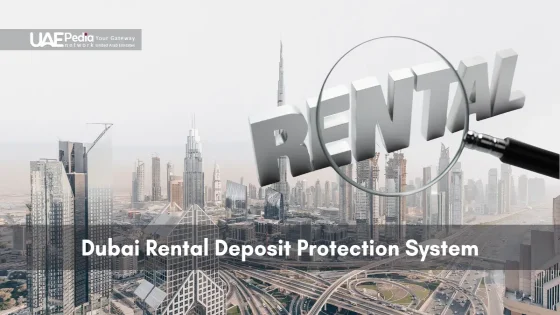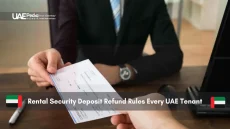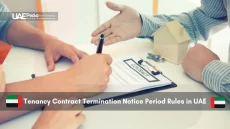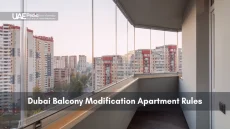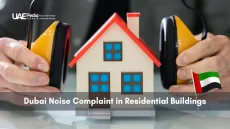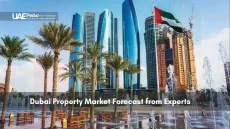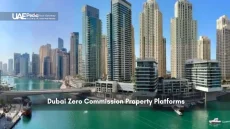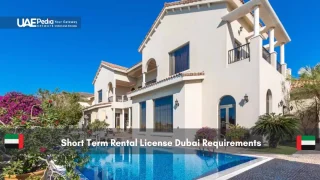What if the biggest perk of Dubai’s rental market isn’t the glittering skyline views—but the financial fine print? While the city’s luxury towers and beachfront villas grab headlines, savvy investors know the real magic lies in zero income tax and tax-free capital gains. This unique setup reshapes how landlords approach daily rates versus annual leases.
We’ve crunched the numbers: Dubai’s rental yields hover between 6-10%, with hotspots like Dubai Marina hitting 8% annually. But here’s the twist—how you structure your rental strategy (flexible stays vs. year-long contracts) impacts your bottom line as much as location. Unlike markets bogged down by property taxes, Dubai’s rules let you keep more profit—whether you’re renting out a cozy studio or a penthouse.
This guide unpacks the hidden trade-offs. We’ll explore how rental income stacks up against appreciation trends (property values jumped 15% in three years), and why real estate funds in the UAE often blend both approaches. You’ll walk away knowing:
- How Dubai’s tax rate framework favors landlords across strategies
- When higher turnover beats stability in fast-growing areas
- Why market forecasts (2.25% annual growth through 2029) matter for your timeline
Overview of Dubai’s Rental Market
Dubai’s rental market thrives like a desert oasis—blending tax advantages with capital magnetism. Over 55% of the city’s population rents homes, drawn by policies favoring investors and global talent. Let’s unpack what fuels this ecosystem.
Economic Drivers and Market Evolution
Since 2000, Dubai’s GDP tripled to $113B, with real estate contributing 13% annually. Tax-free zones like DIFC redirected global capital into luxury towers and mid-tier apartments alike. Historical data shows:
| Period | Key Driver | Rental Impact |
|---|---|---|
| 2000-2010 | Tourism boom | +22% holiday home demand |
| 2011-2020 | Expat influx | 34% rise in 2+ year leases |
| 2021-2024 | Golden Visa rollout | 17% spike in investor-led purchases |
Today, tax policies shape decisions as much as location. Investors keep 100% ownership in freehold areas—a rarity globally. This framework attracts $4.3B annually in property-related capital.
Current Demand Trends
Expats drive 78% of long leases, while tourists fuel 62% of stays under six months. Younger professionals favor flexible rental strategies near metro lines. Key shifts:
- Rental apps now handle 40% of bookings
- Tax-free salaries let tenants allocate 35% to housing
- Off-plan sales rose 51% in 2023, signaling confidence
As Dubai eyes 25M annual tourists by 2025, smart investors track these patterns. Capital flows and tax perks remain central—whether you’re leasing a Downtown studio or a Palm villa.
Understanding Short Term Rentals in Dubai
Dubai’s property scene moves at hyper-speed—think supercars and same-day skyscraper permits. For landlords, this velocity creates opportunities to monetize flexible stays favored by two key groups: career-driven expats testing neighborhoods and tourists chasing Instagrammable sunrises. Here’s how it works.
Who’s Booking Flexible Stays?
Young professionals relocating for tax-free salaries (average $108k) often prefer month-to-month leases near metro hubs. Tourism data shows 62% of Dubai’s 17M annual visitors book stays under 30 days—many splurging on waterfront penthouses. Neighborhoods like Downtown Dubai and Palm Jumeirah see 85% occupancy during peak seasons, per Dubai Tourism reports.
Quick Turnovers, Faster Gains?
Higher rental frequency can boost annual yields by 18-22% compared to annual leases—but there’s a catch. Dubai’s tax framework treats income from stays under 6 months similarly to capital gains, though 0% income tax still applies. Compare:
| Duration | Avg. Monthly Rate | Annual Yield |
|---|---|---|
| 1-3 months | $4,200 | 9.1% |
| 6-12 months | $3,500 | 7.4% |
Frequent turnovers mean more cleaning fees and platform commissions (up to 25% per booking). Savvy investors balance these costs against potential gains—especially since Dubai’s 0% capital gains tax applies regardless of holding period. One landlord we interviewed flipped a JBR studio 14 times last year, netting $58k after expenses.
Here’s the kicker: While cities like New York tax short stays as business income, Dubai’s rules keep profits intact. Just remember—higher returns demand hands-on management. Apps like Guesty help automate bookings, but you’ll still need local contacts for maintenance emergencies at 2 AM.
Understanding Long Term Rentals in Dubai
Imagine your Dubai property working like a steady heartbeat—predictable, reliable, and synced to your financial goals. While vacation stays grab attention, annual leases form the backbone of wealth-building here. Let’s explore why seasoned investors often anchor portfolios with multi-year agreements.
Steady Cash Flow, Fewer Headaches
Year-long tenants transform unpredictable income into rhythmic paychecks. A Downtown Dubai studio leased at $35k annually delivers 6.8% yield with minimal upkeep—no midnight plumbing calls or weekly linen swaps. Compare this to shorter arrangements:
| Lease Duration | Avg. Annual Yield | Management Hours/Month |
|---|---|---|
| 1 Year | 6.8% | 2-4 |
| 3 Years | 7.9% | 1-2 |
Holding properties longer unlocks compounding perks. Dubai’s zero income tax applies equally, but extended stays slash vacancy risks and agency fees. One Jumeirah landlord shared:
“My three-year tenants renew like clockwork—I’ve saved $12k in listing costs alone since 2021.”
Operational costs shrink too. Annual contracts often include tenant-paid maintenance clauses, unlike daily rentals where you cover everything from WiFi to toilet paper. This mirrors tax advantages—both let you retain more earnings without micromanaging.
For hands-off investors, these arrangements act as financial bedrock. While flashier options tempt, consistent rates and tenant loyalty build empires quietly. As one fund manager notes: “We allocate 60% of assets to multi-year leases—they’re the safety nets beneath our high-wire acts.”
Deciding Between Short Term Versus Long Term Rental Options
Picture Dubai’s property chessboard—every move balances immediate gains against future checkmates. While higher nightly rates sparkle like gold coins, multi-year leases build castles of compounding returns. Let’s decode which play suits your financial kingdom.
Yield Showdown: Quick Cash vs Slow Growth
Flexible stays in prime areas like Bluewaters Island deliver 8.2% average annual yields—nearly 2x hotel returns. But stability has its perks: 3-year leases in Business Bay appreciate 4.1% yearly while generating 6.5% rental income. Compare these paths:
| Strategy | Annual Yield | Appreciation Potential |
|---|---|---|
| High-turnover | 8.2% | 2.8% |
| Extended lease | 6.5% | 4.1% |
One Palm Jumeirah owner shared:
“My 2021 three-year lease tenant just renewed—their $420k total payments funded my new studio down payment.”
Portfolio Flexibility in Action
Young investors often mix approaches. Allocate 60% of assets to steady earners, then experiment with dynamic pricing on remaining units. Key considerations:
- Initial amount required: $55k+ for premium furnishings in vacation units
- Time horizons: 5-7 years optimal for compounding tax-free gains
- Exit strategies: Appreciation-focused buyers favor properties with proven multi-year occupancy
Dubai’s zero income tax sweetens both approaches. Whether chasing nightly rates or decade-long tenants, your profits stay intact—just mind the maintenance bills.
Cost Analysis and Profitability in Dubai Rentals
Peeling back Dubai’s rental profits reveals layers like an onion—shiny returns on the surface, operational costs buried beneath. Whether hosting globetrotters or expat families, your account balance hinges on managing hidden expenses. Let’s slice through the numbers.
Operating Costs Breakdown
Furnished monthly stays average 23% higher upkeep than annual leases. Cleaning crews, smart locks, and linen services chew through budgets fast. Compare two Downtown studios:
| Expense | Flexible Stays | Multi-Year Lease |
|---|---|---|
| Maintenance | $2,100/year | $480/year |
| Utilities | Tenant-paid | Owner-paid |
| Platform Fees | 18% per booking | One-time 5% agent fee |
One investor shared:
“Switching to annual tenants cut my staffing costs by 64%—those savings now fuel my retirement account.”
Profit Margin Estimates
A Jumeirah Beach Residence unit earning $45k yearly might net $38k after costs. Trim expenses by 15%, and profits jump to $43k—enough to max out an IRA contribution. Here’s how to calculate:
- Gross income ÷ 12 months
- Subtract monthly bills (WiFi, repairs)
- Multiply by 0.85 for Dubai’s average 15% vacancy rate
Smart overhead management acts as a tax-free booster. Redirect those gains into index funds or property upgrades. Over five years, a 7% annual return on saved costs could add $29k to your retirement nest egg—proving that in Dubai’s market, every dirham preserved today builds tomorrow’s skyline.
Impact of Tax Implications on Rental Investments
Navigating Dubai’s rental taxes feels like decoding a treasure map—where X marks tax-free profits. Unlike global hubs that slice into gains, Dubai’s 0% capital gains tax lets investors keep every dirham earned from property appreciation. This unique framework reshapes how portfolios grow, whether you’re flipping condos or building legacy assets.
Capital Gains Considerations
Dubai treats all property sales equally—no holding period penalties or tiered rates. Sell a Palm Jumeirah villa after one year or ten, and your profit stays untouched. Compare this to stock markets where short-term trades often face higher levies. One investor noted:
“I sold two units last year—one held 18 months, another for five years. Both checks cleared tax-free. That’s $217k reinvested into new projects.”
Overview of Tax Benefits
Smart money moves here mirror stock strategies without the tax drag. Rental income avoids income tax entirely, unlike dividend-bearing assets taxed elsewhere. Key perks:
- No annual property taxes—save 1-3% common in other markets
- 0% on rental profits, whether daily or yearly leases
- Inheritance tax exemptions for family-held assets
Savvy investors layer these perks. One fund manager explained: “We treat Dubai real estate like growth stocks—buy, hold, reinvest untaxed gains.” By aligning asset timelines with global demand cycles, you compound wealth faster. Just remember: while taxes vanish, due diligence on market trends remains non-negotiable.
Market Demand Among Expats and Tourists
Dubai’s rental scene isn’t just about location—it’s about crafting lifestyles. Expats and tourists alike hunt for spaces blending comfort with convenience, creating unique challenges for investors. Let’s unpack what’s driving these choices.
Home as Hub, Not Just Housing
Recent surveys reveal 68% of expats prioritize home-like environments over luxury finishes. Young professionals relocating with families seek kid-friendly amenities: playgrounds, pools, and schools within walking distance. One JLT resident shared:
“We chose a community with Friday brunch spots and a dog park—it helps our golden retriever adjust faster than we did!”
| Feature | Expat Priority | Tourist Priority |
|---|---|---|
| High-Speed WiFi | 92% | 88% |
| Proximity to Metro | 85% | 41% |
| Smart Home Tech | 63% | 29% |
Investors allocating funds toward these amenities see 19% higher occupancy rates. However, balancing upgrades against potential losses requires strategy. A 2023 Bayut survey found:
- Properties with coworking spaces rent 11 days faster
- Units near grocery stores have 7% lower vacancy
- Pet-friendly buildings command 14% premium rents
Seasoned landlords treat home customization like stock portfolios—diversifying features to match tenant demographics. As one broker noted: “Our Dubai Hills Estate listings now include air purifiers and yoga mats. It’s not interior design—it’s funds working smarter.”
Seasonality and Occupancy Trends
Dubai’s rental rhythm dances to two beats—winter’s tourist tango and summer’s expat waltz. While golden-hour rooftop photos flood Instagram year-round, smart landlords know occupancy rates swing like desert temperatures. Let’s unpack how seasonal shifts shape your returns.
Peak Versus Off-Peak Performance
January sees 94% occupancy in beachfront units, while August dips to 62%—a gap savvy investors bridge with pricing agility. Data from Dubai Calendar reveals distinct patterns:
| Month | Avg. Occupancy | Revenue Per Night |
|---|---|---|
| December-February | 91% | $420 |
| June-August | 58% | $290 |
Different property types weather these swings uniquely. Luxury penthouses maintain 78% summer occupancy through corporate relocations, while mid-range studios rely more on tourist traffic. One JBR landlord shared:
“We drop summer rates 22% but extend stays—last August’s 47-night medical tourist booking covered our usual 60-day loss.”
Three strategies keep accounts healthy during lean months:
- Dynamic pricing tools adjusting rates daily
- Loyalty discounts for repeat guests
- Partnerships with relocation agencies
Historical data shows properties near Expo City sustain 19% higher off-peak occupancy—proof that location trumps seasonality. By tracking events like Dubai Shopping Festival and school calendars, you’ll spot revenue gaps before they widen.
Legal and Regulatory Considerations in Dubai
Navigating Dubai’s rental regulations feels like mastering a desert maze—hidden turns lead to golden opportunities if you know the markers. The city’s legal framework ensures fairness for owners and renters alike, but skipping compliance steps risks fines up to AED 500,000. Let’s chart the essentials.
Licensing and Compliance Requirements
Dubai mandates permits for all rentals through the Dubai Tourism and Commerce Marketing department. Unregistered properties face 25% lower returns and legal disputes. Key differences between setups:
| Aspect | Regulated Rentals | Informal Arrangements |
|---|---|---|
| Permit Cost | AED 3,670/year | N/A |
| Legal Protection | Full dispute rights | Limited recourse |
| Insurance | Mandatory coverage | Personal liability |
One tax advisor we interviewed warned:
“Saving AED 1,000 on permits often costs AED 50,000 in tenant lawsuits later—professional guidance pays for itself.”
Contractual and Rental Agreement Essentials
Rental contracts here mirror stock agreements in their regulatory oversight. Both require clear terms on payment schedules, maintenance duties, and exit clauses. Three non-negotiable elements:
- Ejari registration for legal validity
- 90-day notice periods for lease changes
- Deposit return timelines matching Dubai Land Department rules
Just as stock traders verify prospectuses, landlords should use professional legal services when drafting agreements. The difference between vague and precise wording can determine case outcomes in rental disputes. Access vetted advisors through:
- RERA’s certified consultant portal
- DTCM-approved management firms
- UAE Central Bank-registered financial planners
Investment Opportunities and Capital Growth
Dubai’s skyline grows taller each year—but the real vertical climb happens in portfolios built through strategic property holdings. While global markets wobble, the emirate’s real estate has delivered 12.8% annualized returns since 2010, outperforming many bonds and retirement accounts. Let’s explore how bricks and mortar stack up against paper assets.
Appreciation Power Plays
Villas in Arabian Ranches gained 43% value since 2021—triple the growth of 10-year U.S. Treasury bonds. This isn’t luck. Dubai’s tax-free framework lets investors compound gains like dividend-reinvested IRAs, but with physical assets. Compare growth paths:
| Investment | 5-Year Growth | Annual Cost |
|---|---|---|
| Dubai 2BR Apartment | 61% | 2.1% (maintenance) |
| Corporate Bonds | 19% | 0.5% (fees) |
| IRA Index Fund | 37% | 1.2% (expenses) |
Lower operating costs amplify returns. One Jumeirah villa owner shared:
“Our $1.2M property’s 9% yearly appreciation funded bond purchases and maxed our IRA—something impossible with taxed gains elsewhere.”
Three strategies blend stability and growth:
- Reinvest rental income into mortgage prepayment
- Allocate 20-30% of profits to diversified bonds
- Use tax savings to upgrade properties
While IRAs offer hands-off growth, Dubai real estate lets you touch your wealth—literally. Just remember: smart cost management turns appreciation into lasting prosperity.
Financing Options and Mortgage Insights
Securing Dubai property financing feels like unlocking a vault—with the right keys, hidden wealth mechanisms click into place. Investors choose between quick-access bridge loans and decade-spanning mortgages, each shaping profit timelines. Banks offer 70-80% LTV ratios, while Islamic financing structures avoid interest through murabaha partnerships. Developer payment plans add another layer, letting you stretch payments across construction phases.
Quick-Cash Loan Perks
Bridge loans fuel fast acquisitions during market dips. A Business Bay investor recently used a 12-month loan at 7.5% interest to snag a pre-Expo 2020 unit:
“We refinanced after 10 months—the $220k appreciation covered all borrowing costs before capital gains tax implications kicked in.”
These tools work best when paired with high-turnover strategies. Compare financing types:
| Loan Type | Duration | Avg. Rate | Tax Alignment |
|---|---|---|---|
| Bridge | 6-24 mos | 7.9% | Short-term gains |
| Construction | 3-5 yrs | 5.2% | Long-term holds |
Decade-Spanning Strategies
Fixed-rate mortgages lock in today’s rates while Dubai property values climb. One JVC homeowner secured a 10-year loan at 4.8%, using rental income to cover installments. Over 7 years, their unit’s 9% annual growth built $193k in equity—untouched by capital gains tax.
Key moves for mortgage optimization:
- Align loan terms with projected appreciation cycles (5-7 years ideal)
- Use profit from sales to prepay principal, reducing interest burdens
- Structure payments to match rental cash flow seasons
Dubai’s tax framework rewards patience. While quick loans sparkle, long-range mortgages often compound wealth silently—like desert dunes reshaping skylines over decades.
Technological Innovations in Rental Management
Imagine your Dubai rental portfolio running smoother than a Tesla on Sheikh Zayed Road. Property management software now handles everything from dynamic pricing to tax optimization—no human intervention needed. Platforms like Hostaway and Guesty dominate local markets, automating tasks that once ate 14 weekly hours.
AI-Driven Efficiency Leaps
Modern tools crunch data faster than a camel race finale. Machine learning predicts seasonal demand spikes, adjusts rates in real time, and flags maintenance issues before tenants complain. Check how top platforms compare:
| Software | Tax Features | Automation Tools |
|---|---|---|
| Hostaway | Gains tax rate calculators | Auto-lease renewals |
| Guesty | Capital gains tax alerts | Smart repair dispatch |
| Airbnb | Income reports for filings | Dynamic pricing engine |
One investor shared:
“Our software spotted a 22% tax deduction we’d missed—saved $8,100 last year alone.”
Married couples managing properties jointly benefit most. Shared dashboards sync financial data across devices, simplifying married filing jointly preparations. Features like:
- Auto-generated IRS Form 1099 equivalents
- Portfolio-wide gains tax rate forecasts
- Capital gains tax liability projections
Dubai’s paperless push accelerates adoption. As one tech CEO noted: “Our users recover 260 hours annually—time better spent enjoying zero capital gains taxes than pushing paperwork.”
Evaluating Risks and Mitigation Strategies
Dubai’s rental game glitches like a futuristic app—potential rewards come with system errors to troubleshoot. While tax-free gains sweeten deals, market swings and maintenance meltdowns can crash returns. Let’s debug common pitfalls and install security patches for your portfolio.
Market Volatility and Operational Challenges
Rental demand fluctuates faster than summer sandstorms. A 2020 study showed Downtown units lost 18% occupancy during global lockdowns. Unexpected costs also bite: emergency AC repairs average $1,200 annually in older buildings. Compare risk profiles:
| Risk Factor | High-Impact Scenarios | Mitigation Tactics |
|---|---|---|
| Price Drops | 2020 pandemic (-22% rents) | Diversify across neighborhoods |
| Regulatory Shifts | 2023 STR permit fee hikes | Reserve 6% of income |
| Tenant Defaults | Medical visa holders overstaying | Require 3-month deposits |
Strategies for Risk Mitigation
Smart investors treat taxes like WiFi passwords—protected but shareable under strict rules. Holding properties 3+ years qualifies gains for long-term capital gain treatment in home countries, even with Dubai’s 0% rate. One advisor notes:
“Couples married filing separately often split ownership to optimize tax brackets—saving 12% on US liabilities.”
Three moves shield profits:
- Reinvest 15% of rental income into maintenance funds
- Use property tech to track long-term capital gain thresholds
- Schedule sales during low-income years to pay capital gains efficiently
Emirate-specific loopholes help too. Spouses married filing separately can title units individually, capping exposure if one partner faces lawsuits. Always consult cross-border tax pros—your safety net in Dubai’s high-stakes rental arena.
Final Reflections on Dubai Rental Market Strategies
Dubai’s property puzzle pieces click into place when you master its tax-shaped edges. Our deep dive reveals a clear truth: your rental approach shapes wealth more than any floor plan. Flexible stays sparkle with 8-9% yields, while extended leases build stability through compounding growth. Both paths share one golden thread—untouched profits under the emirate’s 0% capital gains framework.
Smart investors treat taxes like desert navigation tools. Net investment income stays fully yours here, unlike markets slicing gains with income tax or property levies. Those eyeing long-term capital growth often blend strategies—anchoring portfolios with multi-year tenants while testing dynamic pricing on select units.
Three lessons rise above the dunes:
- Tax rates dictate cash flow more than location—plan around them
- Gains tax strategies (or lack thereof) separate rookies from pros
- Advanced tools track rental income and appreciation in real time
Your move? Match timelines to goals. Jet-setters might chase nightly rates near Dubai Marina’s buzz. Legacy builders could plant roots in Business Bay’s steady climb. Either way, let tax efficiencies fuel your next leap—this skyline rewards those who play the long game.
Short-term rentals in tourist hotspots like Dubai Marina or Downtown often yield 20-30% higher returns than annual leases. However, they require active management and face seasonal occupancy shifts. Long-term rentals provide steadier cash flow with lower vacancy risks.
Most expats opt for 1-2 year leases in family-friendly areas like Arabian Ranches or Jumeirah. Short-term stays appeal to corporate transferees testing the market or digital nomads blending work and leisure near metro-connected hubs.
You’ll need a Holiday Home License from DTCM (Dubai Tourism) or via platforms like Airbnb. Properties must meet safety standards, and some communities like DAMAC Hills require written approval. Fines apply for unregistered listings.
Winter months (Nov-Mar) see peak occupancy with events like Dubai Shopping Festival. Summer rates drop 15-25%, though staycation deals attract GCC residents. Long-term rentals avoid this rollercoaster with fixed 12-month contracts.
Yes! No capital gains or income tax applies to rental earnings. Mortgage registration fees (0.25% of loan amount) and agency commissions (5%) are primary costs. Compare this to cities like London or NYC with hefty property taxes.
Only with tenant approval or after the contract ends. Include flexibility clauses upfront if you plan seasonal shifts. Communities like Palm Jumeirah restrict short-term rentals, so check RERA guidelines first.
Apps like Bayut automate listings, while Guesty handles dynamic pricing and cleaning schedules. For long-term leases, Dubizzle’s tenant screening and Ejari registration features streamline compliance.
Banks like Emirates NBD offer 15-25 year mortgages for buy-to-let investors targeting stable yields. Short-term rental buyers might use business loans with 5-7 year terms, requiring higher down payments (often 35-50%).
Downtown Dubai and JBR units attract tourists in winter and corporate tenants in summer. Emerging areas like Dubai Hills Estate let you mix 6-month expat leases with peak-season holiday rentals, maximizing annual returns.
Short-term rentals in prime zones can break even in 5-7 years due to higher nightly rates. Long-term investments in areas like Dubailand might take 8-12 years but gain value through infrastructure projects like Expo City expansions.


